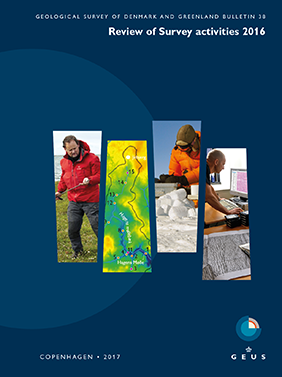Karst sinkhole mapping using GIS and digital terrain models
DOI:
https://doi.org/10.34194/geusb.v38.4392Abstract
Danish glacial landscape elements such as basal till plains, hummocky moraine areas and outwash plains contain a variety of small and large depressions. They were probably formed in glacial, late-glacial or Holocene time and may represent dead-ice holes or degraded pingos, or sinkholes formed by interaction between pre-Quaternary chalk or limestone bedrock and the thin glacial co ver. The aim of this study is to map terrain depressions that might potentially be karst sinkholes by analysing digital terrain models in the geographic information system (GIS). The incentive to apply the technique for mapping of sinkholes came from an accidental acquaintance with a farmer, Jens Kirk, whose farmland is located near Thisted. Jens Kirk told us that the front end of his tractor had suddenly sunk into the ground during routine farming work, and this incident was our inspiration to start the project described here.
Downloads
Downloads
Published
How to Cite
Issue
Section
License

This work is licensed under a Creative Commons Attribution 4.0 International License.
GEUS Bulletin is an open-access, peer-reviewed journal published by the Geological Survey of Denmark and Greenland (GEUS). This article is distributed under a CC-BY 4.0 licence, permitting free redistribution and reproduction for any purpose, even commercial, provided proper citation of the original work. Author(s) retain copyright over the article contents. Read the full open access policy.







